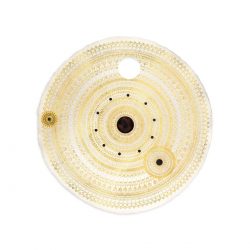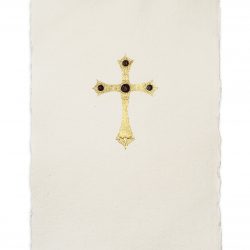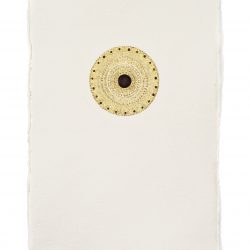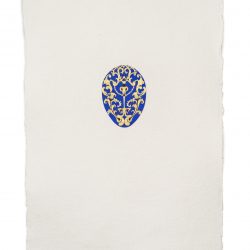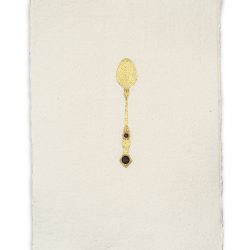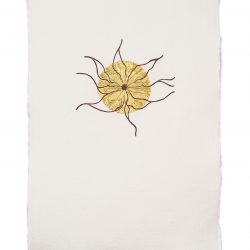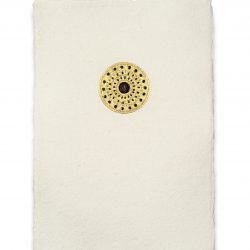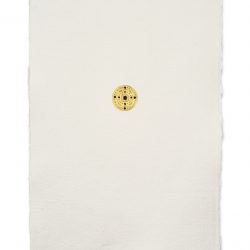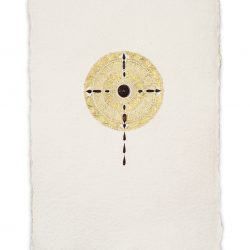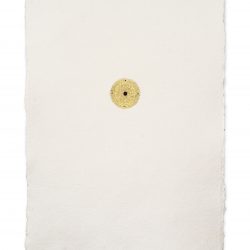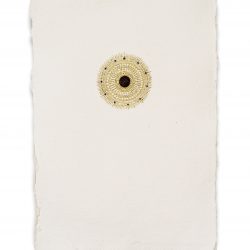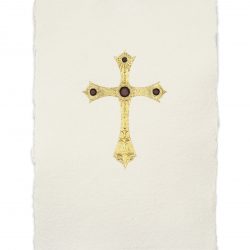Family tree and miniatures
As an artist I’m concerned with where, in an increasingly secular age, the sacred is to be found. I work with blood and gold because their rich symbolism lends itself to such an investigation. They provide the perfect media with which to explore the tension between the beautiful and the grotesque, themes of love and kinship, loss and resilience.
Some blood is donated by friends, family and strangers, and is drawn from the vein. Some I take from placentas that have been similarly gifted. As the visceral interface between mother and child, the enabler of life, the placenta is the only human organ that’s jettisoned when its work is done. It embodies and encapsulates both the humdrum ordinariness of life, and its sheer, breathtaking miraculousness. What if it were sanctified not reviled?
These are labour-intensive pieces that reflect and celebrate the literal and metaphoric vitality of the materials from which they’re made. They employ objects from the traditional domain of women’s work – a child’s spoon, a doily – and from religious imagery encountered during my upbringing.
The central piece – ‘Matriarchal Family Tree’ – explores the connection between mother and child across four generations. It’s made with mine and my mother’s blood, and with blood from my daughter’s placenta. The absence of my sister, who died in a tragic accident, is signified by a gaping hole.
But all of these pieces are secular reliquaries, mandalas of the ordinary. For blood cannot help but take us from the particular – the person from which it came – to the universal.
